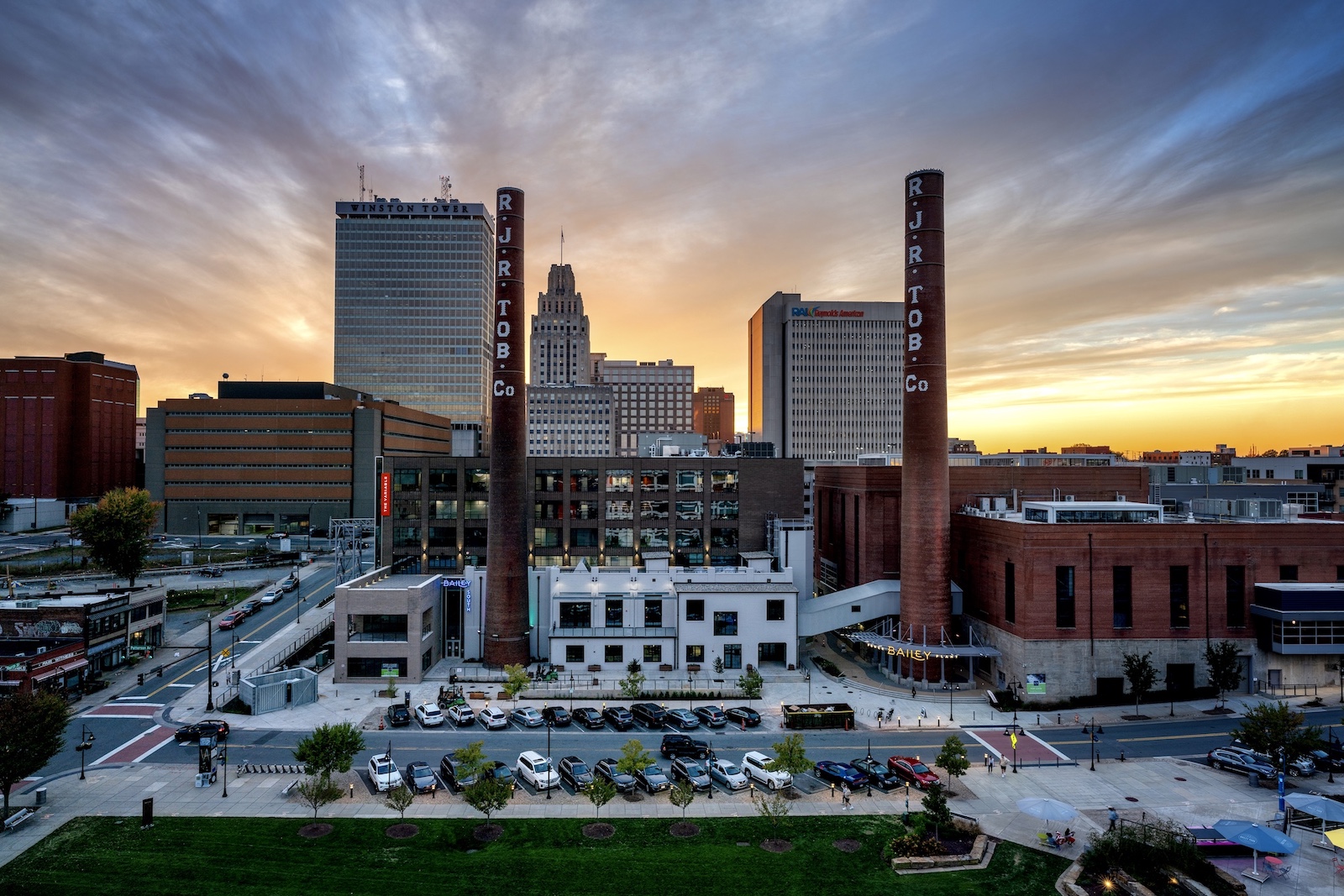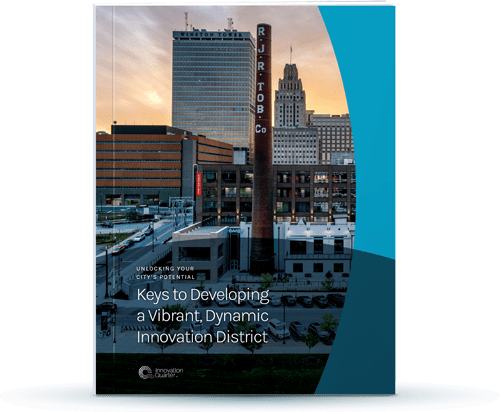What You Need to Know About Innovation Districts
Visit almost any thriving metropolitan area, and you’ll notice at least one thing they have in common—a section of the city that’s buzzing with activity. Here you’ll find professionals, students and families mingling amongst each other; buildings that house everything from start-ups to minority-owned businesses to national corporations; and amenities like public art and green space. There’s no doubt that these few blocks are the heart of the city—an innovation district dedicated to community development and entrepreneurship. But what is an innovation district exactly, and why does it matter?
What Is an Innovation District?
An innovation district is a concentrated area of physical spaces that cluster entrepreneurs, medical institutions, start-ups and academia. The Brookings Institution credits density, proximity, accessibility and mixed-use spaces as what’s needed to create an environment ripe for collaborating, networking and living.
What Makes a Successful Innovation District?
These districts blend economic, physical and networking assets in a way that encourages connection. They are blurring lines that divide where we work, live and play, and are becoming crucial pieces of local and regional economic development strategies. They are typically:
- Tied to at least one anchor institution. Research universities and research-oriented medical hospitals that partner with the district become known as the anchor institution. The institution’s R&D focus and access to capital provide a strong foundation for academic-industry collaboration that can lead to new businesses and drive job growth.
- Mixed-use spaces. These areas are where people can live, work and play. They offer housing, office, amenities and retail spaces, ultimately encouraging inclusion and the formation of cross-industry relationships and partnerships.
- Use repurposed land or structures. A hallmark is that they emerge in areas of previously developed land that’s no longer in use—think vacated warehouse districts or renovated buildings along waterfronts.
An Example of an Innovation District
The Innovation Quarter was first conceptualized in the early 2000s and has grown to over 200 acres and 1.7 million square feet of mixed-use space, 20,000 of which is laboratory space dedicated to biomedical and scientific research. The Innovation Quarter can boast of a tenant list that includes Wells Fargo, Precise Bio and Wake Forest School of Medicine, the 16th largest teaching hospital in the US. A focus on mixed-use development has turned the district’s empty tobacco warehouses and manufacturing plants into a district that’s now home to everything from a blockchain start-up to a craft chocolate factory.


What About Research Parks?
Like innovation districts, research parks are small areas established to promote technological research, development and commercialization by bringing together academia, medical institutions and technology- or life science-based companies. In contrast, research parks tend to be more isolated and closed-off.
What Does a Research Park Look Like?
Research parks have evolved since the first one emerged in the 1960s, but most are characterized by their:
- Suburban location. Research parks are established in undeveloped, suburban areas with room for sprawling campuses and are generally only accessible by car or private transportation.
- Single-purpose space. Research parks have the sole purpose of clustering research and academia. The proximity of these entities nurtures cooperation and collaboration, but research parks lack amenities like retail spaces, restaurants and housing.
An Example of a Research Park
Research Triangle Park (RTP) in Raleigh, NC, is the oldest and largest research park in the country, built on former farmland between three major North Carolina universities (Duke University, the University of North Carolina at Chapel Hill and North Carolina State University). It’s home to a mix of over 200 companies, including established corporations like IBM, Fidelity Investments and BD Technologies.
What’s the Key Difference Between the Two?

Both are rooted in a shared goal among local decision-makers and stakeholders: advance technology and develop cutting-edge products. However, innovation districts take a holistic approach to creating a network of resources, companies and communities through inclusive planning, mixed-use placemaking and programming.
How Will Innovation Districts Shape the Future?
The Innovation Quarter was once named Piedmont Triad Research Park, but that name no longer reflected the district’s goals once a mixed-use master plan was adopted. RTP leadership has also changed course and recognized the demand for and the benefits of incorporating mixed-use space into their research park. Within the past decade, RTP has developed a plan to transform 100 acres of its 7,000-acre campus from a cluster of insulated corporate campuses into a walkable and livable hub.
We know that today’s innovation climate values cross-industry partnerships and collaboration, and its workforce expects amenities like housing, retail, restaurants and greenspace near their workplace. To survive and thrive into the future, research parks should embrace what has given innovation districts their footing: alignment with modern lifestyles and deliberate development of high-density, mixed-use spaces to create open and inclusive innovation.




